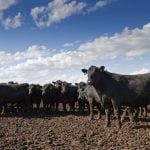Along with more pulse crops in Prairie farmers’ rotations, there has also been more research into the impact these crops have on our soil. Agriculture and Agri-Food Canada researchers have recently published several research papers on this issue. This work has led one of these researchers, Dr. Chantal Hamel, to conclude that there are several […] Read more










